A guide to emeralds and the 4C’s
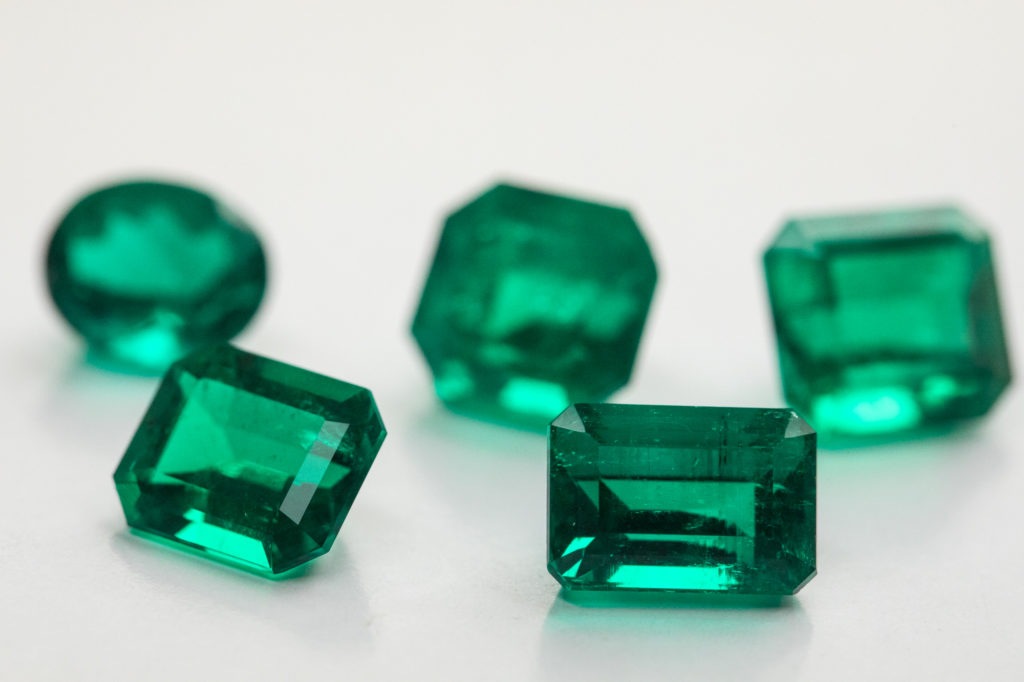
London DE is a fully integrated fine jeweller and gemstone dealer, operating at every stage of the supply chain, from mine-to-market. They focus on the finest grade gemstones and coloured gemstones from around the world, including Colombian emeralds, supplying the whole and manufacturing jeweller market as well as retail consumers. They have a strong international focus, with team members fluent in English, Spanish, French and Chinese and Korean. Their head office is in the heart of Hatton Garden, the capital’s centuries old gemstone and jewellery district. They operate with carefully vetted partners around the world to give them unique access to the top of the gemstone supply chains. When it comes to emeralds, their associates in Bogotá’s emerald district provide the bridge to the finest ethically produced Colombian emeralds. Every stone they source meets the highest of standards, both in terms of responsible sourcing and the highest possible quality. London DE’s in-house experts quality assure each stone based upon decades of experience, but they also certify them with at least one (and often multiple) gemmological certificates. With emeralds the CDTEC gem lab in Bogotá are the primary reference but they often employ the services of SSEF and/or the Gübelin gem lab in Switzerland for a second opinion with larger and more complicated stones. Certification is essential to make certain of the exact characteristics and provenance of each stone, including any treatments that may have been applied.
Cut
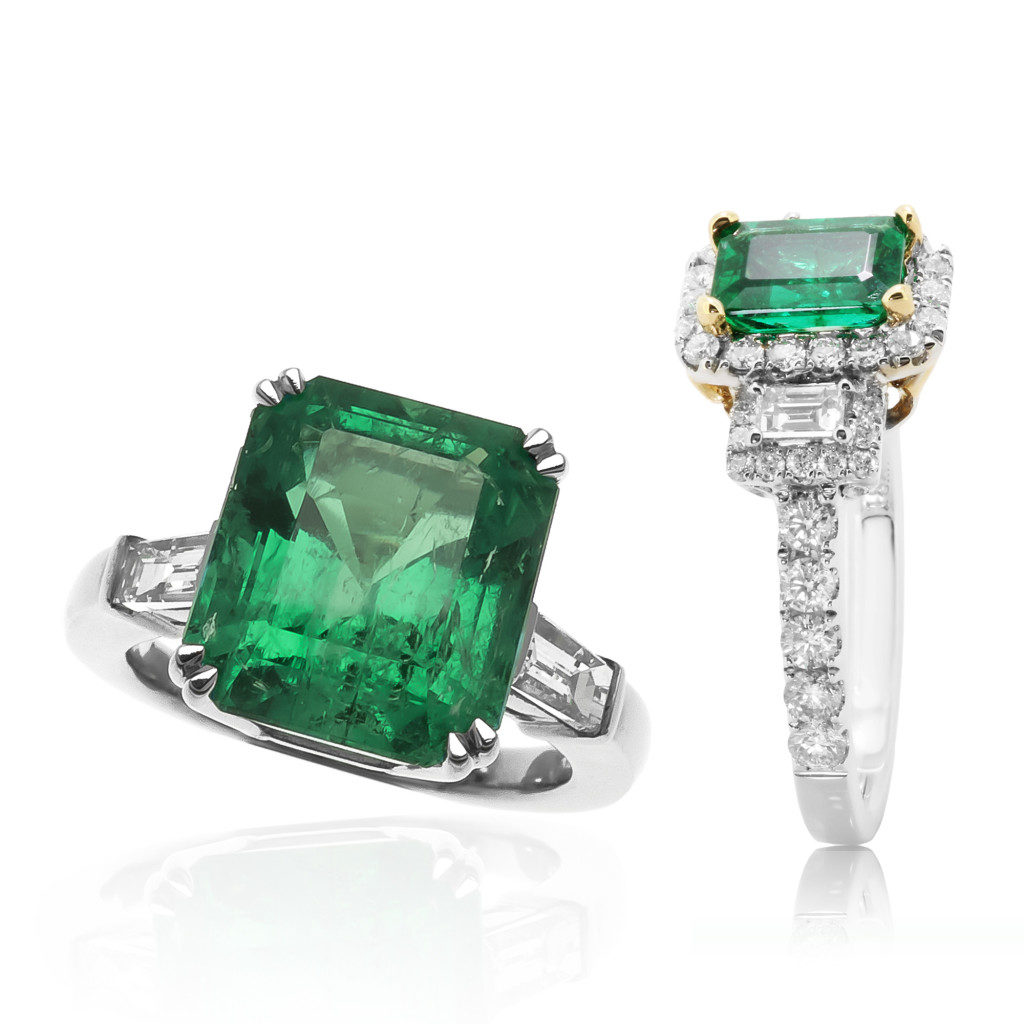
To optimise a rough emerald, certain cuts have been found to accentuate the natural characteristics and beauty of the stone. Nearly all fine emeralds are cut by hand and it often takes many years of experience to perfect this art. This may lead to the resultant emerald adopting a non-symmetrical shape, something that is extremely unusual when diamonds are cut. Intuitively most emeralds are ‘emerald’ cut, and these are usually found at a premium to other cuts. The quality of the cut refers to the accuracy of the angles, proportions, symmetry, and polish of the stone. The cut has a profound effect on the refraction of light within a stone and how it creates ‘scintillation’ or shine.
Colour
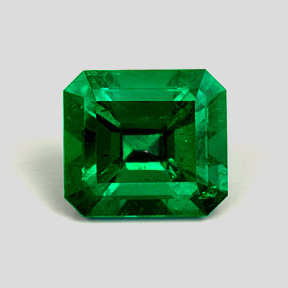
The colour of an emerald is determined by the composition of vanadium and chromium within its crystalline structure. As the abundance of vanadium and chromium within an emerald varies from seem to seem and country to country, emerald producing regions are commonly association with a certain tone of colour and the presence, or otherwise, of secondary colour. Secondary colouration is usually found in shades of bluish to yellowish green. As with all coloured stones, those exhibiting their natural colour are more valuable than those that have been enhanced. Some emeralds are filled with coloured oils, dyes, or resins to enhance the depth of their colour or its tone. These should be avoided at all costs. It is generally agreed that the optimal colour of an emerald is akin to that observed when a green wine bottle is held up against the sun, neither too dark, nor too light.
Clarity
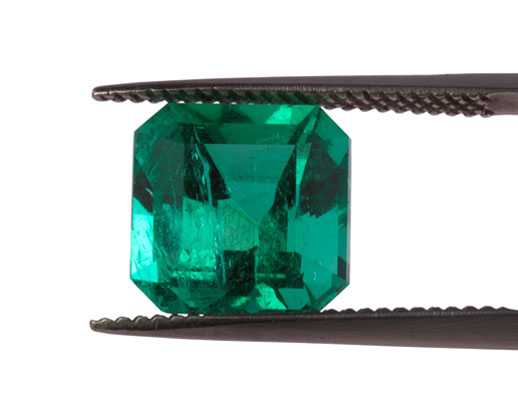
The clarity of an emerald is judged by the presence and disposition of the inclusions found within it. Unlike diamonds, it is impossible to find a ‘flawless’ emerald, as they all contain inclusions. The inclusions themselves form a ‘finger-print’ from which an individual stone can be identified. In addition to inclusions, most emeralds also contain fissures, which are small cavities within the structure of the stone affecting the clarity and colour. Where a cut and polished stone contains surface reaching fissures, these may be filled with various oils, resins, and dyes. It is important to avoid any stone that has been treated with anything other than a minor to moderate amount of oil. Resins and dyes typically deteriorate over time and stones that have been subjected to these treatments normally loose their sheen and lustre over the years. The transparency of an emerald refers to the transmission of light through the stone and it is determined by the quantity or absence of opacity and brilliance.
Carat
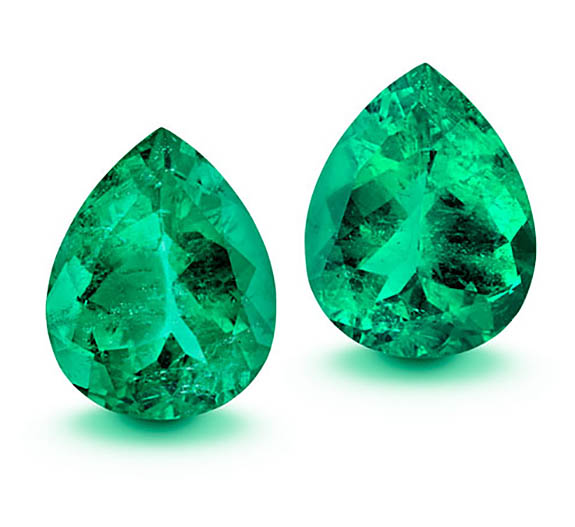
The mass of all gemstones is quantified in carats, where one carat equals 0.2 grams (roughly the mass of a paperclip). The etymology of the term is from the Indian world for ‘carob seed,’ which was used as a benchmark measure for precious stones in ancient times. The value of an emerald increases exponentially with carat size, all else being equal. Therefore, a two-carat stone will be worth significantly more than twice that of a one carat stone, and the price rises noticeable at key sizes. It is interesting to note that an emerald is approximately 30% less dense than a diamond (at 6.5-7 versus 10 respectively on the 1-10 Moh’s scale of hardness). Consequently, it is false to assume that carat equals ‘size,’ as the reality is far more nuanced.
To create something bespoke with emeralds, simply visit London DE’s website or contact them to arrange a consultation with a member of their friendly team.
Visit their blog to read more about emeralds.



